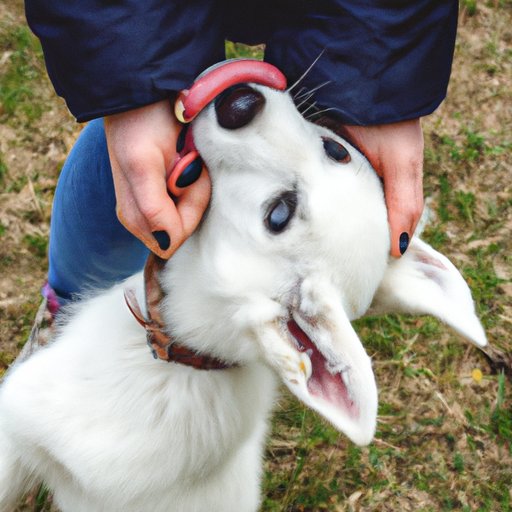
Introduction
Puppies are known for their playful and energetic nature, but their habit of biting can quickly turn into a problem for new puppy owners. Biting is a natural behavior for puppies, but it’s important to address it early on to prevent it from becoming a more serious issue. In this article, we will explore different techniques that can be used to stop puppy biting and prevent it from happening in the first place.
Teaching Puppies Bite Inhibition: A Step-by-Step Guide
Bite inhibition is the ability of a dog to control the pressure of their bite. This behavior is important for all dogs to learn, but it’s particularly important for puppies who are still learning how to interact with the world around them. Teaching puppies bite inhibition can help prevent accidental injuries in the future. Here is a step-by-step guide on how to teach bite inhibition to puppies:
- Start by introducing your puppy to different levels of pressure. This can be done by gently holding their mouth closed and releasing it when they stop biting, or by playing tug-of-war with a soft toy.
- Use positive reinforcement by giving your puppy treats and praise when they demonstrate soft biting or stop biting altogether. This will encourage them to continue with this behavior.
- Consistency is key when teaching bite inhibition. Make sure everyone in your household is using the same method of training and reinforcing good behavior.
Positive Reinforcement Techniques to Stop Puppy Biting
Positive reinforcement is a training technique that focuses on rewarding good behavior instead of punishing bad behavior. Here are a few positive reinforcement techniques you can use to stop puppy biting:
- Using a clicker to signal good behavior before rewarding with a treat or praise.
- Giving treats and praise when your puppy demonstrates good behavior, such as soft biting or stopping biting altogether.
- Incorporating playtime into training sessions. This can help redirect your puppy’s attention and energy towards appropriate behavior.
6 Tips to Prevent Puppy Nipping and Biting
Preventing nipping and biting before it starts is the best way to address the issue. Here are six tips you can use to prevent puppy biting:
- Consistent socialization with other dogs and people can help puppies learn appropriate behavior.
- Encouraging appropriate playtime, such as playing with soft toys or engaging in puzzle games, can help redirect your puppy’s energy.
- Providing plenty of chew toys can give your puppy an appropriate outlet for their biting behavior.
- Avoiding rough play and instead encouraging gentle behavior can help prevent aggressive behavior in the future.
Training your Pup to Control their Mouth: An Effective Method for Reducing Biting Behaviors
The “no bite” command is an effective way to teach puppies to control their biting behavior. Here’s how to teach your puppy the “no bite” command:
- When your puppy bites, say “no bite” firmly but without yelling. It’s important to remain calm but assertive during these training sessions.
- If your puppy continues to bite, redirect their attention to an appropriate chew toy.
- Consistency is key when training your puppy to control their mouth. Use the “no bite” command every time your puppy displays biting behavior.
- Remember to reward good behavior with treats and praise. This will encourage your puppy to continue with the positive behavior.
Redirecting your Puppy’s Mouth: A Gentle Approach to Discouraging Biting
Redirection is a gentle approach to discouraging biting behavior. Here’s how to redirect your puppy’s mouth to an appropriate chew toy:
- When your puppy starts to bite, gently take their mouth away from the person or object they are biting.
- Immediately offer an appropriate chew toy to redirect their attention.
- Consistency is key when using redirection as a training technique. Make sure to offer chew toys every time your puppy displays biting behavior.
- Provide a variety of chew toys to keep your puppy’s interest. This will help prevent them from becoming bored and turning to other inappropriate items.
Conclusion
Puppy biting can be a frustrating behavior for new puppy owners, but with patience and consistency, it can be corrected. Using techniques such as teaching bite inhibition, positive reinforcement, and redirection, as well as preventing biting before it starts, can all be effective in stopping puppy biting. Remember to stay calm and consistent during training sessions, and to reward good behavior with treats and praise. By starting training early and being consistent, you can help your puppy become a well-behaved and happy companion.




